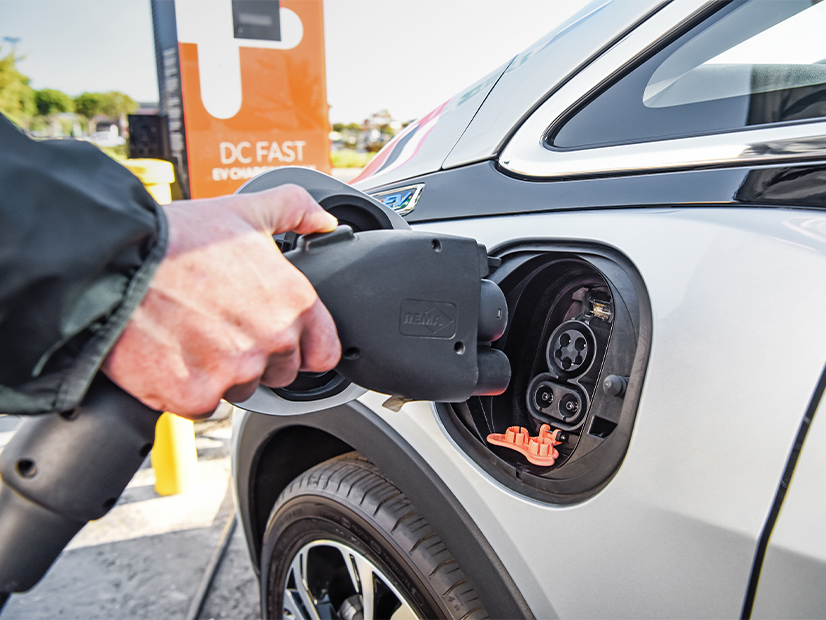
Maine’s recently released Clean Transportation Roadmap shows the state needs to identify significant near-term funding sources for public charging to support electric vehicle adoption.
“There is a gap as we get out to 2024-2025 and the [estimated] number of EVs gets larger,” Geoff Morrison, senior associate with The Cadmus Group, told the Maine Climate Council on Wednesday.
The roadmap, which Cadmus prepared for the state, recommended that Maine adopt California’s Advanced Clean Cars II (ACC II) and invest in 1,400 public Level-2 and DC fast charger plugs by 2025 to support EV growth from that policy.
With an average DCFC plug cost of between $138,000 and $363,000, Morrison said the chargers are expensive and the economics of installing and maintaining them are challenging. Even with high utilization rates, DCFC units would be unprofitable through 2030, according to the roadmap.
“There’s not a great reason to build them right now if there’s no public incentive,” Morrison said.
ACC II would push the total estimated light-duty EVs in the state to between 120,000 and 160,000 by 2030, according to the roadmap. The California Air Resources Board expects to release a rulemaking for ACC II in June, with the regulation taking effect for model year 2026. (See CARB Preparing Full Course of ZEV Rules for 2022.)
Building the public chargers needed for ACC II growth would require an estimated $71 million investment based on roadmap estimates. DCFC chargers would represent the bulk of that investment at $50.3 million.
However, Maine has only $27 million available for EV infrastructure investments over the next four years, leaving a $44 million gap. Available funding includes $8 million from the Maine Jobs and Recovery Plan and $19 million from the federal Infrastructure Investment and Jobs Act (IIJA). The state could narrow the funding gap with potential IIJA competitive grants, which the roadmap estimated would be about $10 million for Maine.
Additional market incentives beyond ACC II are necessary to meet the Maine Climate Council’s call for 219,000 light-duty EVs by 2030. Growing the DCFC network by 15% in 2030 could increase EV sales by 7% for the year, the roadmap said.
New charging infrastructure funding sources identified in the roadmap include a clean fuel standard, vehicle-miles-traveled (VMT) tax, gas tax and carbon mechanism.
Other states are considering or already testing an EV road tax or VMT tax for all passenger vehicles to supplement declines in gas tax revenues that pay for road upkeep. EV users are not assessed a charge in Maine to pay for infrastructure maintenance, according to Joyce Taylor, chief engineer at the Maine Department of Transportation.
The DOT has looked at the issue of declining gas taxes, but EV adoption has not been high enough in the state to warrant solving the problem right now, Taylor said.
A decline in gas taxes from EV adoption is a “national issue that has to be solved nationally, not just state by state,” she said.
An early study of a VMT tax in Maine showed the difficulty of sorting out the capture and allocation of taxes from out-of-state drivers, which is partly why a national solution is necessary, she said.
In a recent study, the Vermont Agency of Transportation estimated that Vermont will lose $5.3 million in gas tax revenues in 2025 from EV market expansion. That study examined the possibility of assessing a per-kilowatt-hour fee for out-of-state drivers when they use charging stations in the state. VTrans determined that a program of that kind, while helpful, would come with administrative difficulties. (See Study: EV Adoption to Cut $5.3M in Vt. Gas Taxes in 2025.)


